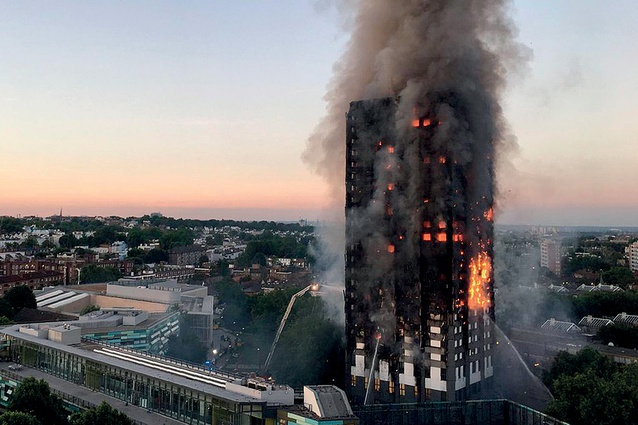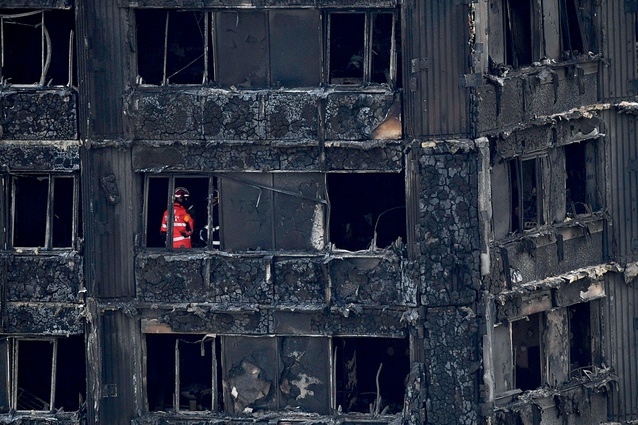Opinion: safe cladding practice
London’s Grenfell Tower fire, with over 70 deaths and counting, is said to be one of the deadliest British fires of the past century. It is a tragedy with international repercussions and we need to reflect on that here in New Zealand.
Although, of course, a thorough investigation has yet to be conducted, it does sound like that building was a disaster waiting to happen. Reportedly no fire alarm sounded, the building had no sprinklers and there was only one egress route. It is also said that tenants had been told that, in the event of a fire, they should stay in their apartments; advice that Brady Williams of New Zealand company Active Building Management describes as “madness”.
The good news for us, as many architects know, is that our fire regulations are generally agreed to be fairly strict compared to many other nations in the world. However, it is probably the cladding issue that we need to pay careful attention to, as Grenfell’s cladding allowed a massive and rapid spread of flames around the entire building, generated a huge amount of toxic smoke and resulted in the incineration of the interior, contents and inhabitants.
What was the cladding on the 24-storey structure? It was aluminium composite panels, ACP. These are widely used throughout the world and produced by a variety of manufacturers under various brand names. They are a sandwich with aluminium on each side and a core that is frequently polyethylene (PE) or polyurethane (PU) but can also be of another material permitting a degree of fire resistance; and this is often denoted ‘FR’.
It is believed Grenfell, which was renovated a few years ago, was re-clad in PE panels. PE “melts at relatively low temperatures and is highly flammable” according to a recent Ministry of Business, Innovation and Employment (MBIE) guide and, of course, this is the branch of New Zealand Government that administers the Building Code.
The aluminium skin is also a good conductor allowing heat to reach the PE very quickly. It is understood that Grenfell’s re-cladding involved a cavity too, and this may well have contributed to both the supply of air to the fire, a flue effect, and the rapid spread of flames. In addition, a thermal insulation seems to have been used that would have had some degree of combustibility.
The ACP cladding system has been implicated in other recent high-rise fires, most notably in Dubai and, closer to home, in the Melbourne Docklands. Many countries in recent years have moved to ban ACP cladding on high-rise buildings by limiting its use to buildings of a certain height, generally a few storeys that can be reached by fire engine ladders.
In New Zealand, Michael James, the Society of Fire Protection Engineers’ vice-president, says it means ACP cladding with a PE core would not be used on buildings taller than seven metres now, due to the fact that anything above this height would require a fire test.
In 2016, MBIE released a guide to ACP use in relation to fire performance focused on clause C3. In January 2017, the Government limited the use of the cladding here and now councils around the country have been asked to check the extent of the cladding material on high-rise buildings in their areas. In May, MBIE tendered for consultation proposals related to fire safety, including better verification methods for cladding.
So is this level of risk management adequate? One concern pointed out by Sean Marshall, managing director of building consultants Prendos, is the possibility of material substitution. This is when an architect or designer specifies the fire-resistant version of ACP but through value management or cost cutting, whether it be upfront or behind the scenes, substitutes the PE or another more combustible version for ACP. This is a real concern considering the extent to which substitution happens in this country and the level of fakery that we have already seen in materials such as steel and plumbing supplies.
In New Zealand, Auckland in particular but also in cities such as Tauranga, Wellington, Christchurch and Queenstown, we are seeing increasing numbers moving to medium- and high-rise modes of living. Personally, I think that high-rise buildings are generally well-designed with specialist consultants but we are also seeing a high number of conversions of commercial space to residential – some of which, in my experience, are not well-designed and have not used the full range of expert advice.
As ACP is also a very popular re-cladding material, my concern is that, at this end of the spectrum of current building activity, re-clads and renovations are generally done on the cheap with more potential for dodgy practice.
Building consultant Louise Swann has called for better certification and guidance: “So let’s give all that information up front, really clearly, then people can make design and install decisions with full knowledge.”
MBIE has a responsibility to address this matter and it does seem they have been moving in this direction as a result of recent international fires and the Grenfell inferno. They also say they have pressed certification accreditation bodies to move faster. No reputable manufacturer or supplier worth their salt wants their products used when they aren’t fit for purpose – it’s a good way to gain a bad reputation for what could otherwise be a useful product.
Just as the Leaky Building Crisis tarnished all monolithic claddings, we have the potential here for ACP, which remains a useful product when used appropriately, to become something specifiers steer clear of. I’d encourage them to front-foot this issue and come out with really good guidance and certification on the product and best practice systems in a range of situations. I’d also suggest that everyone plays it safe and only specifies fire-resistant versions of ACP.











